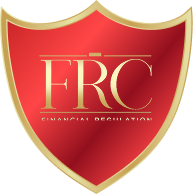The financial world has seen a paradigm shift over the last decade, with sustainable investing emerging as a vital approach to wealth management. High-net-worth individuals (HNWIs) are increasingly adopting sustainable investment strategies, driven by the desire to align their portfolios with personal values, manage risk effectively, and tap into long-term growth opportunities.
Sustainable investing, often associated with environmental, social, and governance (ESG) criteria, enables HNWIs to achieve dual goals: financial returns and positive societal impact. By integrating sustainability into their portfolios, they can contribute to solving global challenges such as climate change, inequality, and resource scarcity, while preserving their wealth for future generations.
This article delves into the key strategies for sustainable investing tailored to HNWIs, exploring its benefits, challenges, and practical applications in portfolio management.
For many HNWIs, sustainable investing is not just about returns; it is also about aligning their wealth with personal and family values. Issues such as climate change, ethical labour practices, and community development often resonate strongly with affluent individuals, particularly among younger generations.
Sustainability-related risks, such as environmental degradation, regulatory changes, and reputational harm, can have significant financial implications. By prioritising ESG factors, HNWIs can identify and mitigate these risks, creating more resilient portfolios.
Sustainable investing is not a trade-off between impact and returns. In fact, ESG-focused companies often outperform their peers over the long term, benefiting from operational efficiencies, customer loyalty, and forward-thinking strategies.
ESG integration involves embedding environmental, social, and governance factors into traditional financial analysis and decision-making processes. For HNWIs, this means selecting investments based on a company’s commitment to sustainability alongside its financial performance.
Example: Investing in a renewable energy company with strong governance and community impact.
Benefit: This approach ensures that sustainability and profitability go hand in hand.
Thematic investing allows HNWIs to focus on specific global challenges or opportunities, such as clean energy, water conservation, or gender equality. By aligning investments with these themes, clients can directly support industries and innovations that address pressing global issues.
Example: Investing in technology startups focused on sustainable agriculture.
Benefit: Offers targeted impact while capitalising on high-growth sectors.
Impact investing goes beyond ESG integration, aiming for measurable positive outcomes in areas such as poverty alleviation, healthcare access, or environmental restoration. HNWIs can engage in this approach through private equity, venture capital, or philanthropy-linked investments.
Example: Funding a social enterprise that provides clean drinking water in underserved regions.
Benefit: Combines financial returns with tangible social and environmental benefits.
Green bonds are fixed-income securities that fund projects with environmental benefits, such as renewable energy installations or sustainable urban infrastructure. These instruments are particularly appealing to HNWIs looking for low-risk sustainable investments.
Example: Investing in municipal green bonds for climate-resilient infrastructure.
Benefit: Provides stable returns while supporting environmentally impactful projects.
Negative screening involves excluding industries or companies that do not align with the client’s values or sustainability goals. For example, an HNWI may choose to avoid investments in tobacco, weapons, or fossil fuels.
Example: Divesting from coal and oil companies.
Benefit: Reduces exposure to high-risk sectors while aligning with ethical preferences.
HNWIs often invest in real estate, and incorporating sustainability into these investments is a growing trend. Properties with energy-efficient designs, renewable energy systems, and sustainable construction materials offer long-term value while reducing environmental impact.
Example: Acquiring LEED-certified office spaces or residential properties.
Benefit: Combines financial appreciation with environmental stewardship.
The rise of sustainable investing has led to concerns about greenwashing — misleading claims about a company’s ESG performance. HNWIs must conduct thorough due diligence to ensure their investments are genuinely sustainable.
Lack of standardisation in ESG reporting can make it difficult to compare and evaluate potential investments. Advisors must navigate this complexity to provide transparent and reliable recommendations.
While sustainable investments often deliver superior long-term returns, they may require a longer time horizon to realise their full potential. This can pose challenges for HNWIs with immediate liquidity needs.
HNWIs have the financial capacity to support innovations in sustainability, from renewable energy technologies to circular economy solutions. Their investments can drive breakthroughs that reshape industries.
By blending philanthropy with investment, HNWIs can amplify their impact. This could involve establishing foundations or donor-advised funds to finance sustainable initiatives.
Sustainable investing provides a way to bridge generational differences in wealth management priorities. Younger family members often prioritise ESG considerations, making sustainability a unifying strategy for intergenerational wealth transfer.
Every HNWI client has unique values and goals. Advisors must take the time to understand these preferences and tailor sustainable investment strategies accordingly.
Given the prevalence of greenwashing, thorough research and analysis are essential to identify authentic sustainable investments.
Digital platforms and AI-driven tools can enhance ESG analysis and provide real-time insights into the sustainability performance of potential investments.
Sustainability is a dynamic field. Advisors must regularly review and adapt investment strategies to reflect changing market conditions, regulatory environments, and client priorities.
An HNWI divested from traditional energy stocks and reinvested in solar and wind energy projects. This not only reduced their exposure to volatile fossil fuel markets but also generated significant returns as renewable energy adoption grew.
A family office allocated a portion of its wealth to impact investments in social enterprises focused on education and healthcare in developing countries. This strategy aligned with the family’s philanthropic goals while delivering moderate financial returns.
An HNWI portfolio incorporated municipal green bonds to fund sustainable urban infrastructure projects. This provided stable income while contributing to climate resilience in the local community.
The sustainable investing landscape is evolving rapidly, driven by advancements in technology, regulatory frameworks, and societal expectations. Key trends shaping the future include:
Enhanced ESG Reporting Standards: Greater transparency will improve decision-making for HNWIs.
Emergence of New Asset Classes: Innovations such as carbon credits and biodiversity offsets will expand sustainable investment opportunities.
Increased Focus on Social Impact: Beyond environmental concerns, social issues such as diversity, equity, and inclusion will gain prominence in investment strategies.
Sustainable investing offers HNWIs a powerful way to achieve their financial objectives while making a positive impact on the world. By integrating ESG criteria, pursuing thematic investments, and embracing innovative solutions, they can build resilient portfolios that reflect their values and priorities.
While challenges such as greenwashing and inconsistent metrics remain, the opportunities far outweigh the obstacles. Sustainable investing not only drives long-term returns but also enables HNWIs to contribute meaningfully to solving global challenges.
In a world increasingly defined by sustainability, the ability to align wealth with purpose is a defining characteristic of successful high-net-worth investing. By adopting thoughtful and tailored strategies, HNWIs can lead the way in shaping a sustainable future for generations to come.
Be the first to know about new class launches and announcements.


Financial writer and analyst Ron Finely shows you how to navigate financial markets, manage investments, and build wealth through strategic decision-making.
